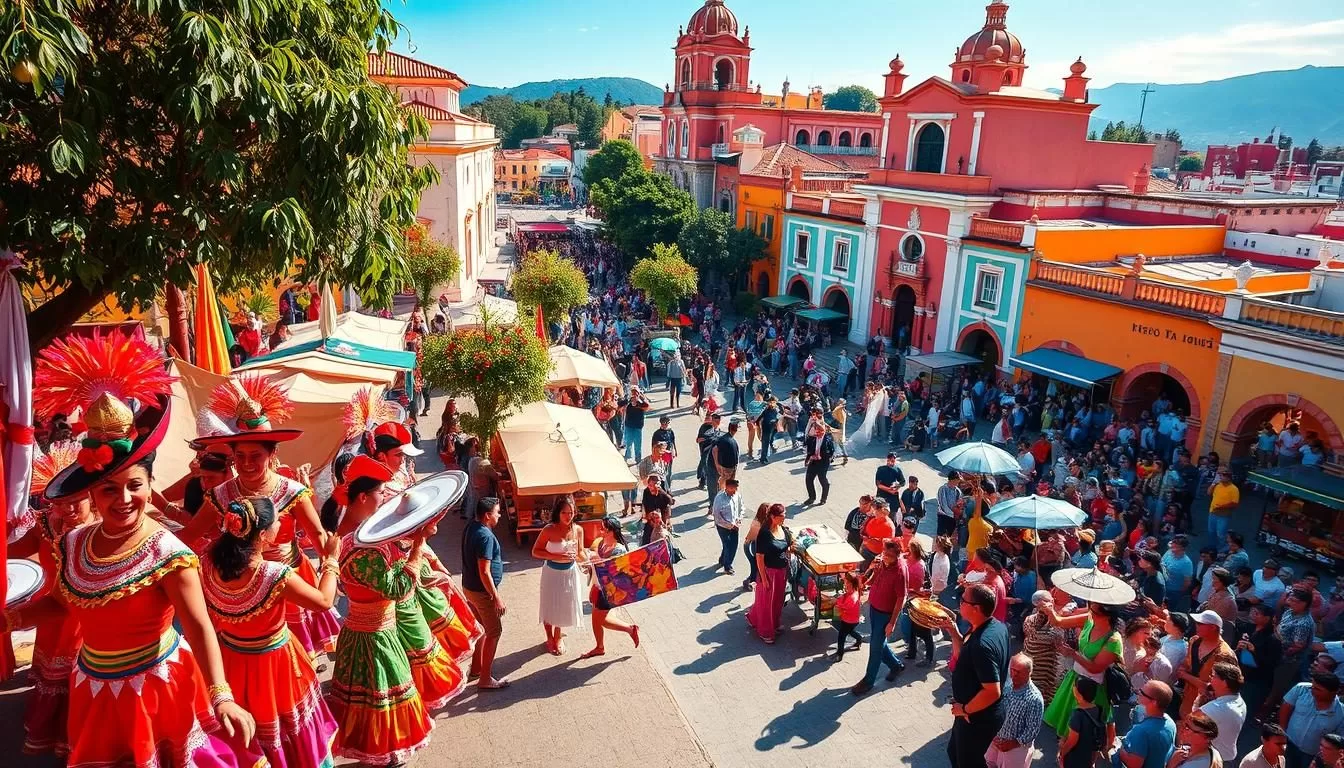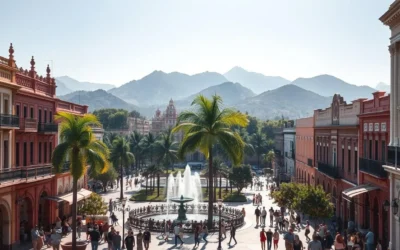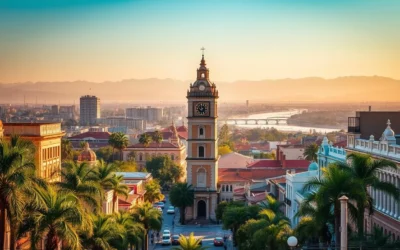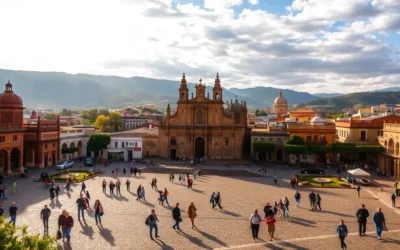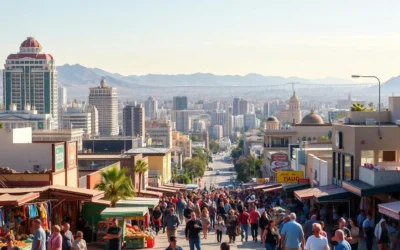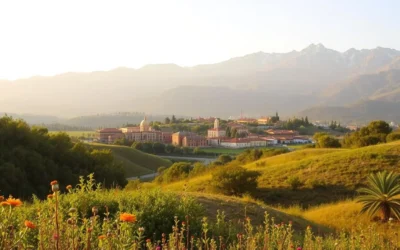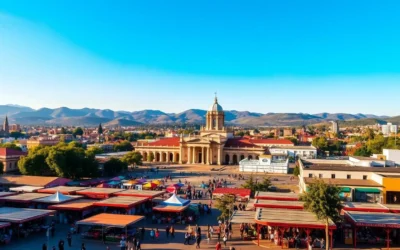Imagine a country where vibrant colors, lively music, and dancing are a way of life. Mexico is known for its rich culture and numerous festivals that take place throughout the year.
You’ll discover why Mexico’s events are a perfect blend of indigenous traditions and Spanish influences, making them a unique experience for visitors. From religious celebrations to historical commemorations, Mexico’s festive calendar is filled with unforgettable culture experiences.
As you plan your visit, this article will guide you through the most significant festivals, providing insights into their historical significance and practical tips on how to participate respectfully.
Discovering Mexico’s Vibrant Festival Culture
Mexico’s festival calendar is a vibrant reflection of its rich cultural heritage, blending indigenous and Spanish influences. The country’s diverse festivals showcase a unique blend of history and cultural identity, offering a glimpse into the life and traditions of its people.
These celebrations are spread throughout the year, providing multiple opportunities for visitors to experience Mexico’s culture regardless of the time of their visit. By participating in one or two of these events, you can plan your holiday around a truly immersive experience.
| Festival | Description | Time of Year |
|---|---|---|
| Día de Muertos | Celebrating life through death | November |
| Día de la Independencia | Mexico’s freedom celebration | September |
| Cinco de Mayo | Commemorating the Battle of Puebla | May |
Mexico is famous for its festive atmosphere, making it a country that is always ready to celebrate. Understanding the significance of these celebrations will enhance your travel experience.
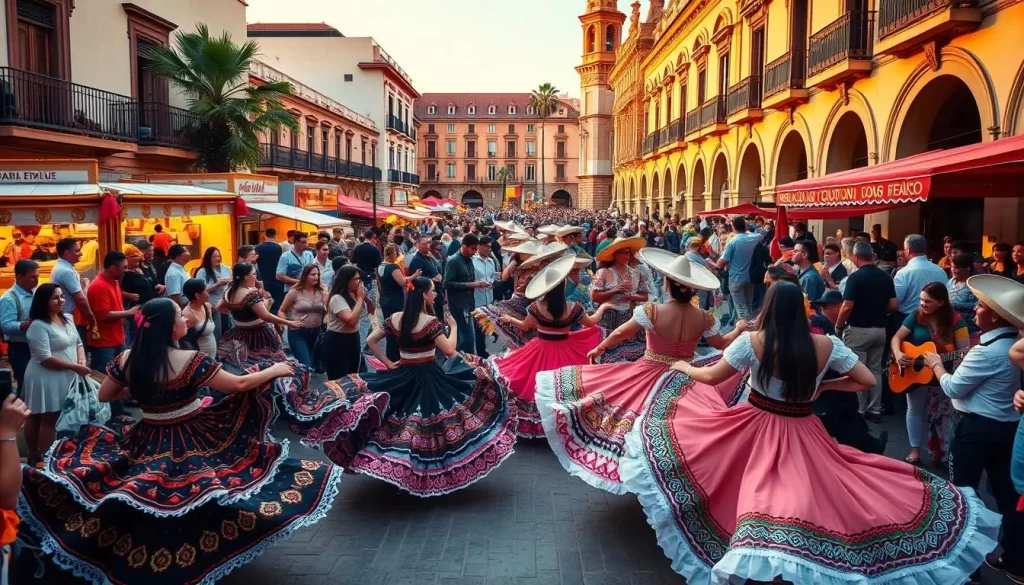
Día de Muertos: Celebrating Life Through Death
Mexico’s Day of the Dead, or Día de Muertos, is a celebration that honors life and legacy. This significant event is not about mourning death but rather about celebrating the lives of loved ones who have passed away.
Historical and Cultural Significance
The origins of Día de Muertos date back to the Aztec Empire, where people honored their deceased loved ones with elaborate altars. This tradition has been preserved and is now recognized by UNESCO as an Intangible Heritage of Humanity.
When and Where to Experience It
Día de Muertos takes place on November 1-2. November 1 is dedicated to children, known as the “Day of the Innocents,” while November 2 is the “Day of the Dead,” honoring adults. Mexico City and Pátzcuaro are among the best places to experience authentic celebrations.
What to Expect as a Visitor
As a visitor, you can participate in the festivities by wearing traditional Catrina makeup, sampling local foods like pan de muerto, and joining candlelit processions to local cemeteries. Families create ofrendas (altars) with photos, favorite foods, and possessions of the deceased, believing that spirits return to visit during these days.
Día de la Independencia: Mexico’s Freedom Celebration
Mexico’s path to independence is remembered and celebrated annually during the Día de la Independencia. This significant event marks the beginning of Mexico’s war for independence from Spanish colonial rule.
The Story Behind El Grito
The celebration centers around “El Grito” (The Shout), a pivotal moment when Father Miguel Hidalgo y Costilla rang a church bell in the town of Dolores, calling for revolution with his famous cry of “Viva Mexico!“
How Independence Day is Celebrated
Mexicans celebrate this day with patriotic displays featuring the national colors of green, white, and red, accompanied by fireworks, concerts, parades, and traditional foods. The Mexican president recreates El Grito at the National Palace in Mexico City by ringing the historic bell and shouting “Viva Mexico!“
Best Places to Join the Festivities
The best places to experience these festivities include Mexico City’s Zócalo, Dolores Hidalgo (where the revolution began), and Guanajuato, where you can witness military parades and join locals in this important national celebration.
Cinco de Mayo: The Battle of Puebla
The significance of Cinco de Mayo lies in its historical context, marking the Mexican Army’s victory over French forces in the Battle of Puebla on May 5, 1862. This event is often misunderstood as Mexico’s independence day, but it’s actually a celebration of the country’s resistance against foreign invasion.
Historical Context and Significance
Cinco de Mayo commemorates the Battle of Puebla, where the Mexican Army, led by General Ignacio Zaragoza, defeated the French army despite being outnumbered. This victory was significant because it represented a symbol of Mexican unity and resistance against foreign occupation.
Modern Celebrations in Mexico vs. the US
While Cinco de Mayo is not a nationwide holiday in Mexico, it’s celebrated with great fervor in Puebla, where the battle took place. In contrast, the United States has adopted Cinco de Mayo as a day to celebrate Mexican culture and heritage, often with larger and more commercialized celebrations.
Experiencing Cinco de Mayo in Puebla
If you’re planning to visit Puebla on Cinco de Mayo, you can expect to see military parades, battle reenactments, and traditional food festivals. The city comes alive with cultural events that honor this pivotal day in Mexican history, making it a unique place to experience the country’s rich heritage.
Día de la Virgen de Guadalupe: Mexico’s Religious Pilgrimage
On December 12, Mexicans honor the Virgin of Guadalupe, the country’s patron saint, in a vibrant religious celebration. This day commemorates the apparition of the Virgin Mary to Juan Diego in 1531.
The Story of Juan Diego and the Virgin
The story of Juan Diego and the Virgin of Guadalupe is a cornerstone of Mexican culture. According to tradition, the Virgin Mary appeared to Juan Diego, speaking to him in his native Nahuatl language. When Juan Diego sought proof of the apparition from a skeptical bishop, he found roses blooming out of season on the hill, and an image of the Virgin was left on his cloak.
Religious Traditions and Celebrations
The Día de la Virgen de Guadalupe is a day of religious devotion and festivity. Pilgrims travel from across Mexico to the Basilica of Guadalupe in Mexico City, many completing the final approach on their knees as an act of devotion. The celebration includes processions, music, dancing, and special masses.
Visiting the Basilica of Guadalupe
The Basilica of Guadalupe, built on the site of the apparition, is the most-visited Catholic shrine in the world. Visitors can witness the deep faith of pilgrims and see Juan Diego’s cloak bearing the image of the Virgin of Guadalupe. It’s a unique experience that combines religious significance with cultural richness.
Carnival Season: Pre-Lenten Celebrations
Before the somber period of Lent, Mexico comes alive with the colorful festivities of Carnival. This joyous celebration is a final indulgence before the 40-day fasting period, characterized by parades, music, and traditional performances that showcase the country’s rich cultural heritage.
Mexico’s Most Famous Carnivals
The port cities of Veracruz and Mazatlán are renowned for hosting Mexico’s most famous carnivals, rivaling international celebrations like Rio and New Orleans in scale and energy. These events attract visitors from around the world with their elaborate parades and vibrant party atmosphere.
Parades, Music, and Traditional Performances
During Carnival, you can expect to experience the rich cultural traditions of Mexico through its music and dance. The celebrations feature elaborate parades with themed floats, performers in vibrant costumes, and traditional dancing that continues well into the night, creating an unforgettable party atmosphere.
Top Carnival Destinations in Mexico
While Veracruz and Mazatlán are standout destinations, other notable places to experience Carnival include Mérida with its “Battle of the Flowers” and Cozumel, showcasing regional variations that highlight local cultural influences. Each place offers a unique twist on the Carnival celebrations, making them worth visiting during this festive period for various events.
Semana Santa: Holy Week Traditions
Mexico’s Semana Santa is a unique blend of religious tradition and cultural expression, attracting visitors from around the world. During this significant religious festival, the country comes alive with solemn processions and dramatic reenactments.
Religious Processions and Reenactments
The celebration features solemn processions where participants carry religious statues through streets decorated with flowers and colorful sawdust carpets. You’ll witness dramatic reenactments of the Passion of Christ, with the most elaborate performances taking place in cities like San Miguel de Allende and Taxco.
Regional Variations Across Mexico
The traditions vary significantly by region, with coastal areas often incorporating more festive elements while highland communities maintain more solemn and traditional observances. As this holiday coincides with spring break in many countries, you should book accommodations well in advance if you plan to visit during this significant time.
Las Posadas: Christmas Season Festivities
Mexico’s Christmas festivities kick off with Las Posadas, a nine-day celebration filled with processions, music, and traditional foods. This significant holiday event reenacts Mary and Joseph’s journey to Bethlehem, seeking lodging for Jesus’s birth.
The Nine-Day Celebration Explained
Las Posadas, meaning “lodgings” or “shelters,” starts on December 16th and continues until Christmas Eve. Each evening, a candle-lit procession takes place, where participants, often children, dressed as angels, shepherds, Mary, and Joseph, go from house to house, singing traditional villancicos. Initially, they’re turned away, but eventually, they’re welcomed into a designated home, where the celebration continues with prayer, traditional foods like tamales and ponche, and breaking a star-shaped piñata.
Participating in Posadas as a Visitor
As a visitor, you can join these community celebrations, especially in smaller towns where the tradition remains vibrant. It’s a unique time to experience Mexican culture and hospitality. You can participate in the processions, enjoy local foods, and be part of a family-oriented event that makes the holiday season even more special.
Autumn Equinox at Chichen Itza: A Natural Spectacle
The Autumn Equinox transforms Chichen Itza into a mesmerizing display of light and shadow, a true marvel of the ancient Maya. During this event, the sun’s light creates a shadow pattern on the northern staircase of El Castillo pyramid, resembling a serpent descending to the earth.
As the day of the equinox approaches, thousands of visitors gather to witness this phenomenon, which takes place around September 21-22. The spectacle lasts for about 45 minutes as the sun sets, making time of the visit crucial for a good viewing experience.
The Serpent Shadow Phenomenon
The serpent shadow phenomenon is a testament to the advanced astronomical knowledge of the Maya. As the sun sets on the equinox day, its light creates a shadow that appears to slither down the temple steps, symbolizing the descent of the feathered serpent god Kukulkan.
Planning Your Visit for the Equinox
To witness this spectacle, plan your visit to Chichen Itza well in advance. The place becomes extremely crowded, and hotels in the area book up quickly. Arriving several hours before sunset is recommended to secure a good viewing spot.
By planning your visit at the right time and being prepared, you can fully experience the magic of the Autumn Equinox at Chichen Itza.
Mexico: Top Festivals to Check Out When Visiting Throughout the Year
Throughout the year, Mexico hosts an array of festivals that highlight its cultural diversity and rich traditions. These events are not just entertaining but also offer a deep dive into the country’s heritage.
Winter Festivals (December-February)
Winter in Mexico is marked by festive celebrations including Las Posadas and Christmas. You can also experience Día de los Reyes (Three Kings Day) on January 6, where children receive gifts, and Candelaria on February 2, when families dress up baby Jesus figurines.
Spring Festivals (March-May)
Spring brings vibrant celebrations such as Carnival in February/March, Semana Santa (Holy Week) in March/April, and Cinco de Mayo, making this season particularly rich in cultural events.
Summer Festivals (June-August)
Summer is the time for Independence Day celebrations in coastal regions, the Guelaguetza indigenous cultural festival in Oaxaca in July, and numerous saint’s day celebrations in towns across Mexico.
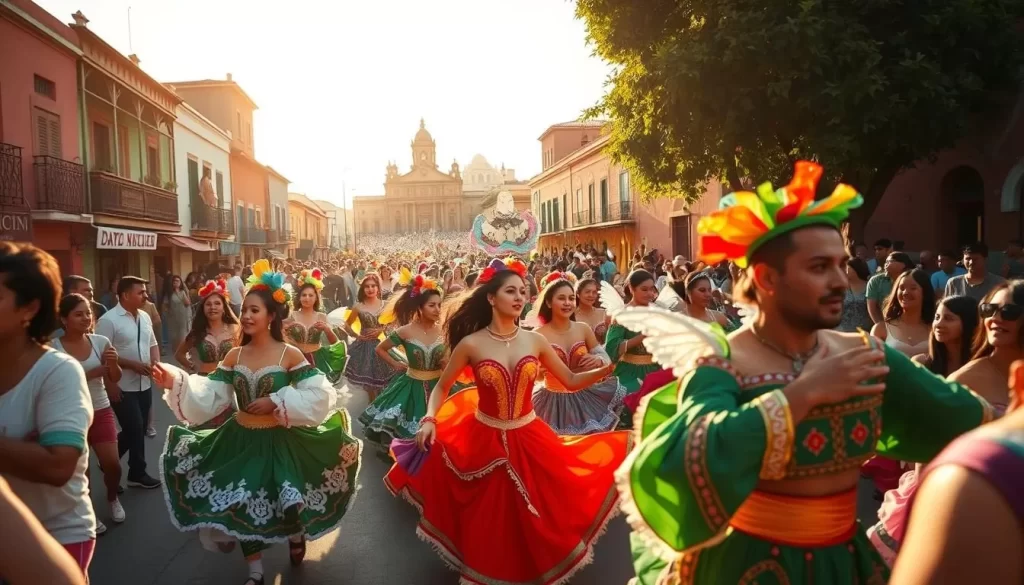
Practical Tips for Festival Attendance
Mexico’s rich cultural heritage is showcased through its numerous festivals, and being prepared will help you enjoy them to the fullest.
To make the most of your festival experience, consider the following practical tips.
Planning Your Trip Around Festival Dates
Plan your trip well in advance, as accommodations in popular destinations like Mexico City can book up months ahead, and prices often increase during these periods.
What to Pack for Festival Experiences
Bring comfortable shoes for standing during parades, layers of clothing for temperature changes, and respectful attire for religious celebrations.
Staying Connected During Your Festival Visit
Stay connected with a local SIM card or eSIM for Mexico to access maps, translation apps, and ride-sharing services without incurring international roaming charges.
Regional Festival Highlights Across Mexico
As you travel across Mexico, you’ll discover a diverse array of festivals that showcase the country’s rich cultural heritage. Each region offers a unique festival experience, reflecting local history, indigenous cultures, and geographical influences.
You can enjoy lots of music and culture during these days, making your trip even more memorable as you experience the country‘s vibrant daily life.
Central Mexico’s Unique Celebrations
Central Mexico, including Mexico City, hosts significant celebrations with elaborate parades and cultural events. You can experience the festivals and history of the region.
Coastal and Beach Town Festivals
Coastal regions like Veracruz and Puerto Vallarta offer a relaxed festival atmosphere, often incorporating seafood festivals and water-based celebrations. You can enjoy these events in a beautiful place.
| Region | Festival Highlights | Notable Events |
|---|---|---|
| Central Mexico | Elaborate parades, cultural events | Concerts, traditional dances |
| Coastal Regions | Seafood festivals, water-based celebrations | Fishing tournaments, beach parties |
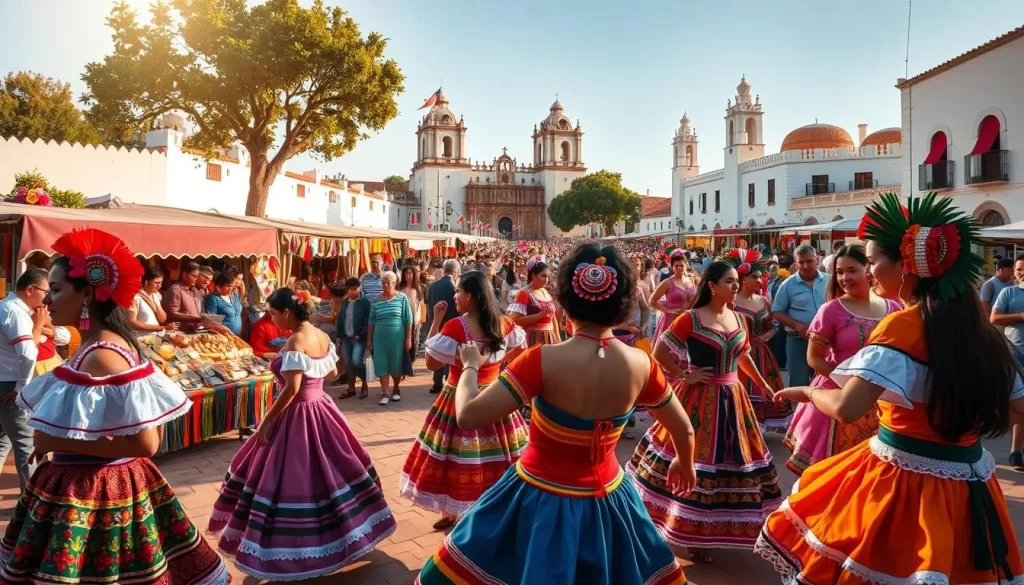
Conclusion: Embracing Mexico’s Festive Spirit
The festive spirit in Mexico is contagious, and experiencing it firsthand is a memory you’ll cherish forever. As you’ve discovered, Mexico’s festivals offer more than just entertainment; they provide a window into the country’s soul, history, and cultural identity. From the profound spiritual connection of Día de Muertos to the patriotic fervor of Independence Day, these celebrations reveal different facets of Mexico’s rich cultural heritage.
By participating respectfully in these cultural events, you’ll create lasting memories and gain insights into traditions passed down through generations. Whether you’re witnessing the serpent shadow at Chichen Itza during the equinox or joining families during Las Posadas, your visit will be truly unforgettable. Mexico’s festivals, such as Cinco de Mayo and Day of the Dead, have gained international recognition, but experiencing them in their authentic context offers a deeper appreciation of their significance.
The above is subject to change.
Check back often to TRAVEL.COM for the latest travel tips and deals.
Here are some Tours & Sightseeing suggestions that might pique your interests!
